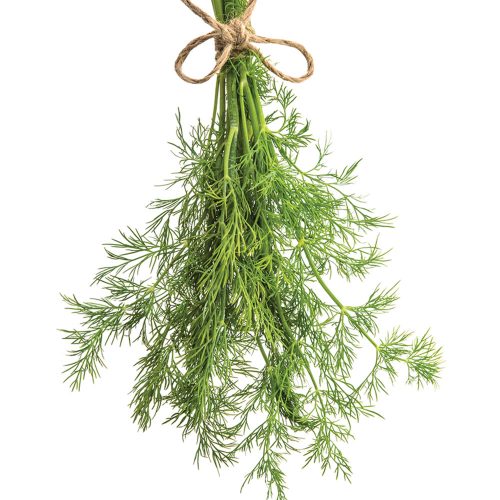
Dill
Although used in small amounts, herbs add beneficial polyphenols to our diet and, while not true for all herbs, fresh dill has more polyphenols than dried.
Use
Dill is a favourite herb of Scandinavian and Eastern European cuisines and is a delight to those of us who love it. Its feathery leaves and fennel-y, aniseed-y taste lend a delicacy to raw or lightly cooked dishes – think raw salmon (gravlax), egg dishes, or potato or cucumber salads. It is also commonly added to pickled gherkins (dill pickles), or to yoghurt and sour cream (see Dill sour cream).
Dill grows readily in New Zealand gardens, although you need to be quick to make use of it before it goes to seed. Collect the seed or let the plants self-seed to keep growing more.
Recipe ideas
Warm salmon and dill pâté
Salmon spaghetti with lemon, bok choy and rocket
Cherry tomatoes
Tomatoes add useful amounts of vitamins A, C and E plus potassium and fibre to our day.
Use
Is there anyone who doesn’t love cherry tomatoes? The vege equivalent of a bright red lolly, cherry tomatoes can be enjoyed with almost any meal, and, often, just on their own as a healthy snack.
Many Kiwis have great success growing cherry tomatoes in their summer gardens, and they’re usually far more productive than the larger tomato varieties.
Recipe ideas
Serve alongside irresistible spreads and dips with other vege ‘dippables’! Try Warm salmon and dill pâté, Lighter Kiwi onion dip, Roasted capsicum hummus
Rosemary chicken sticks with brown rice salad and sun-dried tomato dip
Rocket
Just one cup of rocket leaves provides 19 per cent of our daily needs for vitamin A, great for immunity, vision and so much more, as well as smaller amounts of many other nutrients.
Use
Peppery rocket (also known as arugula) provides a perfect bitter counterpoint to blander flavours in many dishes, both raw (eg. salads), or cooked (eg. pasta or soups). And don’t forget, a bed of rocket is great to lay your grilled meat on, to serve.
Rocket can grow like a weed in New Zealand gardens if you let it, and the young, tender leaves are so easy to pick.
Recipe idea
Article sources and references
- Carlsen et al. 2010. The total antioxidant content of more than 3100 foods, beverages, spices, herbs and supplements used worldwide. Nutrition Journal 9:3https://nutritionj.biomedcentral.com/articles/10.1186/1475-2891-9-3
- Opara EI & Chohan M. 2014. Culinary herbs and spices: their bioactive properties, the contribution of polyphenols and the challenges in deducing their true health benefits. International Journal of Molecular Sciences 15:19183-202https://www.ncbi.nlm.nih.gov/pubmed/25340982
www.healthyfood.com










